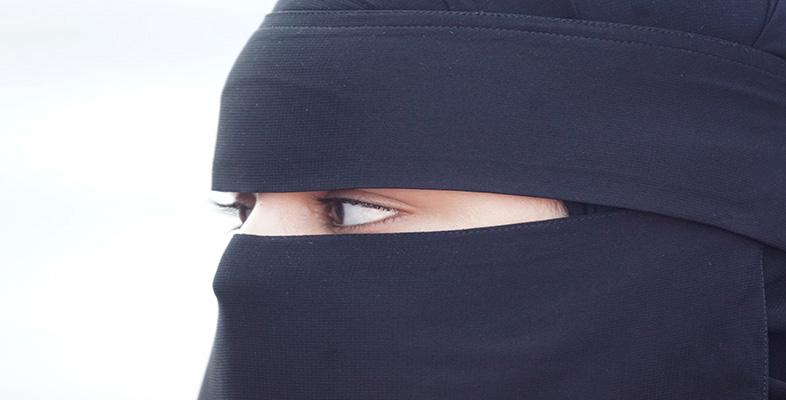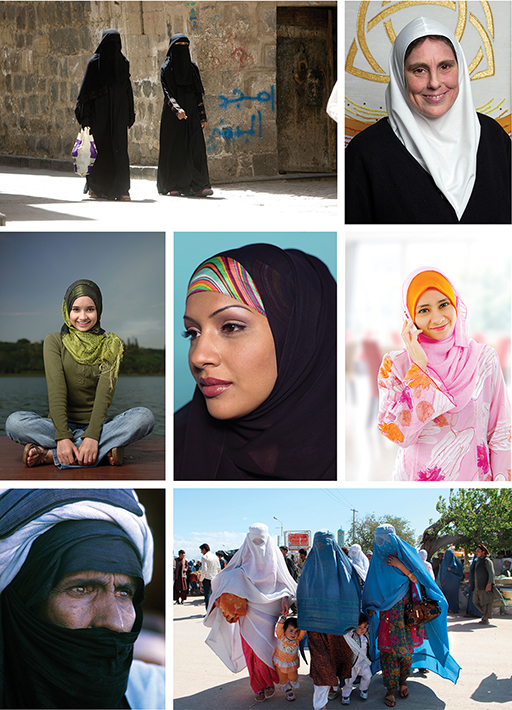1 Different styles of ‘veiling’
In this section we are going to explore different styles of ‘veiling’ and introduce you to some relevant terminology.
Activity 1
Take a look at the images in Figure 1 and consider differences and similarities between them.
Discussion
These images show examples of different styles of ‘veiling’, covering different parts of the body (while all of them cover the hair, ears and neck, some of them also cover the whole body and/or face), using different materials, colours and patterns. You might have assumed that they are all photographs of Muslim women. However, the picture on the right of the top row actually shows an Orthodox Christian nun, and the picture on the bottom left shows a veiled man (a member of the Muslim Berber group, the Tuareg, where this type of ‘veil’ has traditionally been worn by noblemen).
It is important to bear in mind that ‘veiling’ practices have existed in many different cultural, religious, geographical and historical contexts and have been adopted by both men and women. There is a wide range of different styles of ‘veils’ and varieties of ‘veiling’ practices. Before we engage more deeply with the study of different styles and practices of ‘veiling’, it will therefore be helpful to look at some relevant terminology. You may have noticed that in the first part of this course I have put the words ‘veil’ and ‘veiling’ in inverted commas. I have done this because there are certain limitations associated with the use of these terms. Some of these limitations are explored in the following reading, where the anthropologist Fadwa El Guindi critically engages with the origins and meanings of the word ‘veil’, explains the limitations of the use of this term, and highlights the diversity and complexity of the practices that the concept of ‘veiling’ is referring to.

